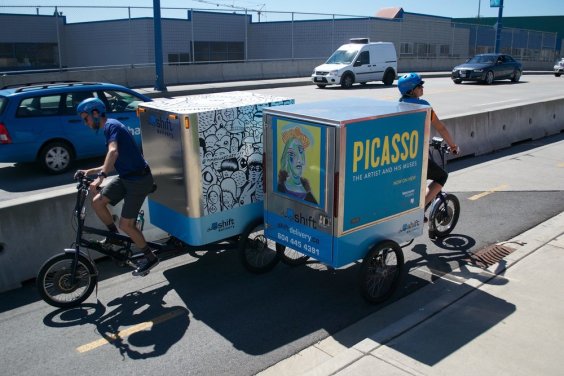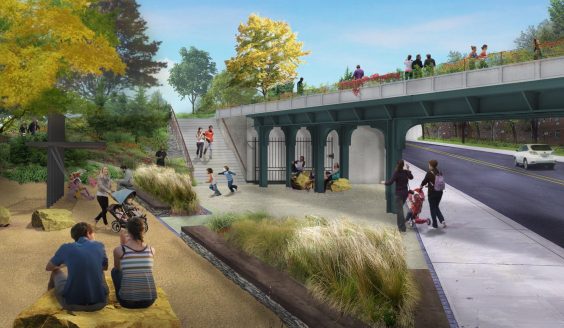Days after pitching
the Senate environment committee for federal help with expediting
his ambitious "30/10"
package of new transit projects, Los Angeles Mayor Antonio
Villaraigosa was back on the Hill yesterday meeting with lawmakers as
part of a broad campaign for more investment in California
infrastructure.
 Villaraigosa, at left, flanked by Sen. Barbara Boxer
Villaraigosa, at left, flanked by Sen. Barbara Boxer(D-CA). (Photo: Life)
Villaraigosa
joined the Los Angeles Chamber of Commerce and a delegation of regional
business owners estimated at 200-strong for meetings with the
environment panel's chairman, Sen. Barbara Boxer (D-CA), as well as
Sens. Dianne Feinstein (D-CA) and John McCain (R-AZ).
Immigration topped the agenda for the McCain meeting, according to Southern
California Public Radio, and the L.A. Business Journal reported
that the Southern California group visited with White House adviser
Valerie Jarrett. But Villaraigosa's meeting with Boxer focused on the
potential for speedier progress on the dozen transit extensions and
expansions that make up the "30/10" list.
In his Senate testimony last week, Villaraigosa indicated that
existing federal funding programs such as Build
America Bonds and the Transportation Infrastructure
Finance and Innovation Act (TIFIA) could prove helpful for his transit
push. However, he also issued a highly relevant challenge to federal
officials struggling for new ways to close the revenue gap
for the next long-term federal transportation bill:
[T]he federal government canand should do more, especially for cities and regions that are comingto the table with money in hand to create a true federal-localpartnership. We have begun conversations with leaders in the Senateand House, the White House, and key federal agencies to strategizeabout how we can partner together to leverage local voter-approvedfunding in a way that will create jobs and improve sustainability.
Becausewe plan to finance much of the 30/10 construction, we believe acombination of multi-year direct loans, loan guarantees, interest ratesubsidies, and innovative repayment terms would enable us to fundconstruction of all 12 of our transit projects over the next decade.This could become the model for a new paradigm in federaltransportation funding, or - at a minimum - an innovative partnershipmodel.
The key words in the mayor's remarks were "leverage local
voter-approved funding," which L.A. did in 2008 under Measure R, a sales
tax increase approved to pay for new transportation projects. If
Villaraigosa can use voters' willingness to pay new taxes -- and the $4
billion-plus that he estimates would be saved by building the transit
projects in 10 years rather than 30 -- to win extra federal commitment,
it would be a major victory for his city.
To create a template for other cities to replicate, however,
Villaraigosa's allies must hope to avoid the scenario facing Denver,
where regional leaders are
seeking another sales-tax hike after revenue from their initial
increase failed to keep pace with cost estimates for the Fastracks
transit plan. The fiscal woes facing Fastracks reportedly stem from land
costs that exceeded expectations, rising construction inflation, and
too-rosy estimates of sales tax revenue; all are pitfalls that could
arise for any city planning major transit investments.





